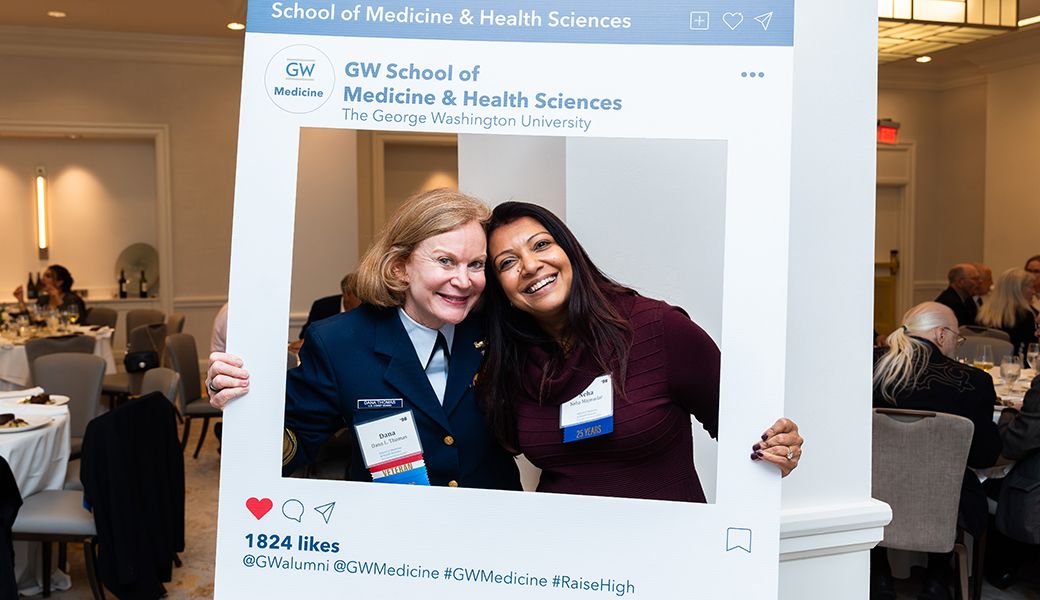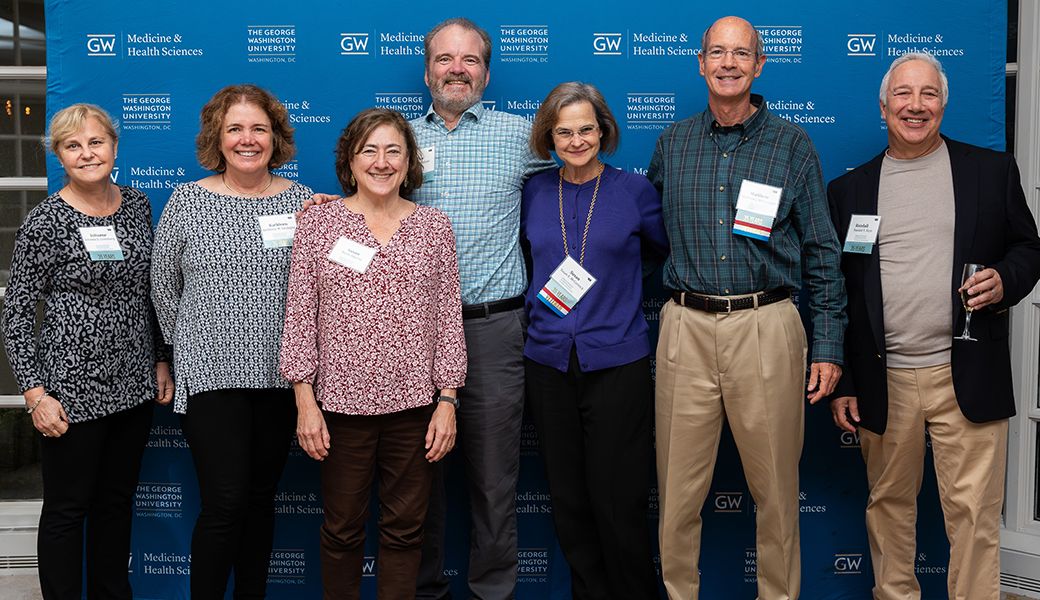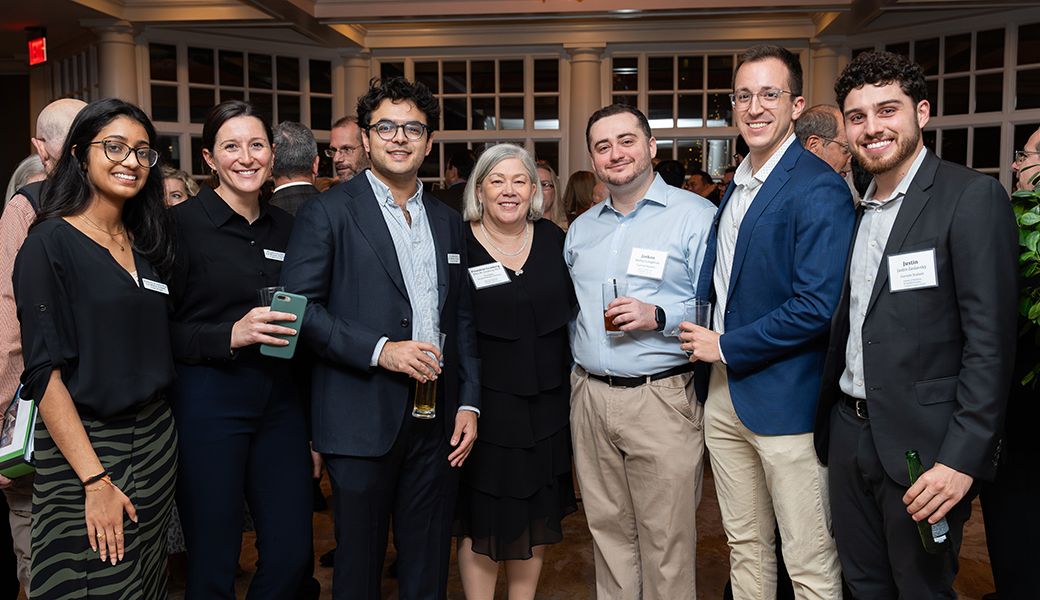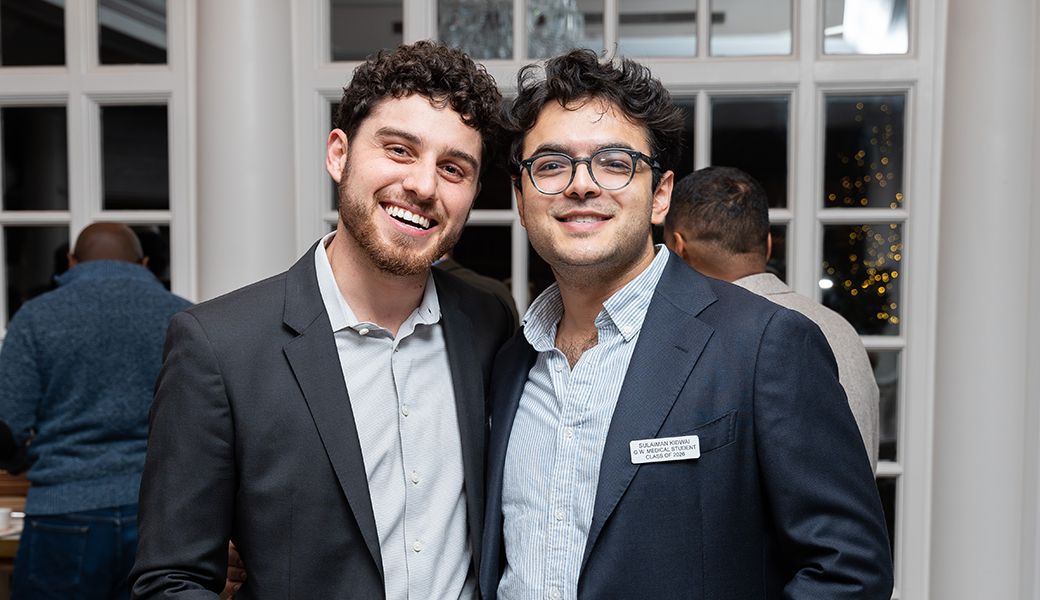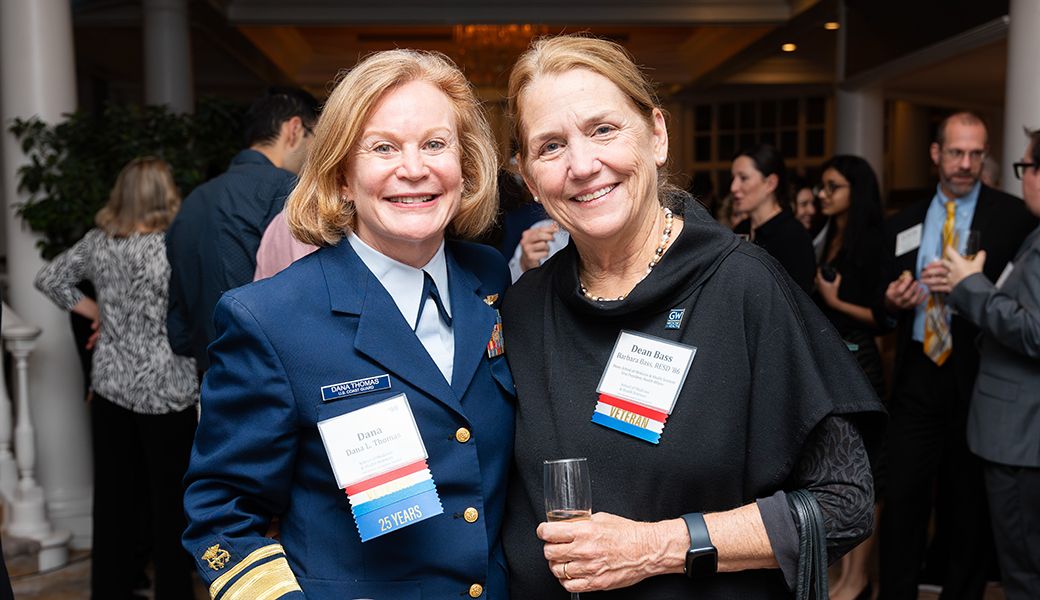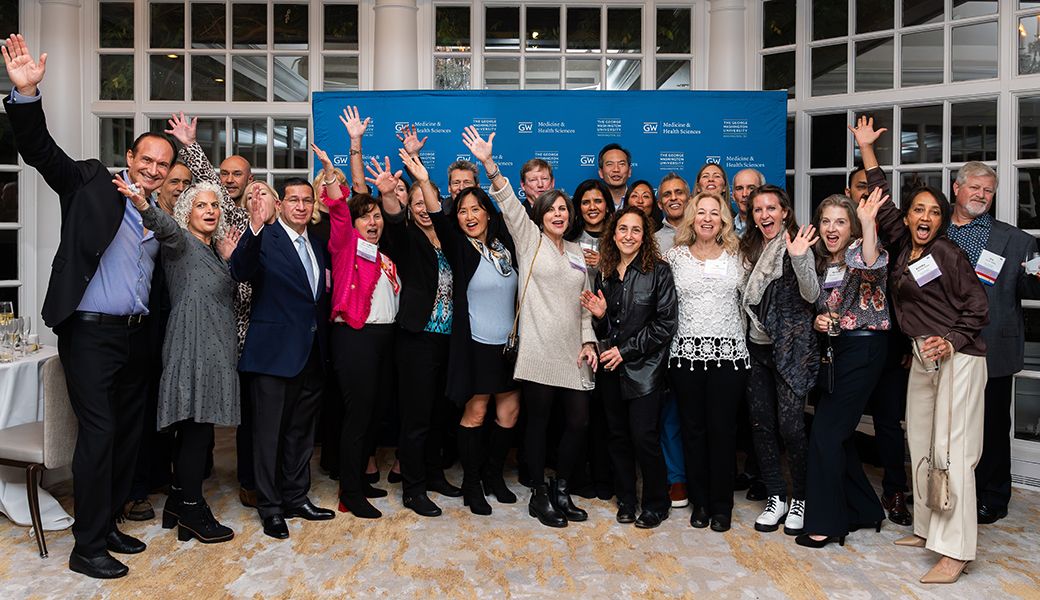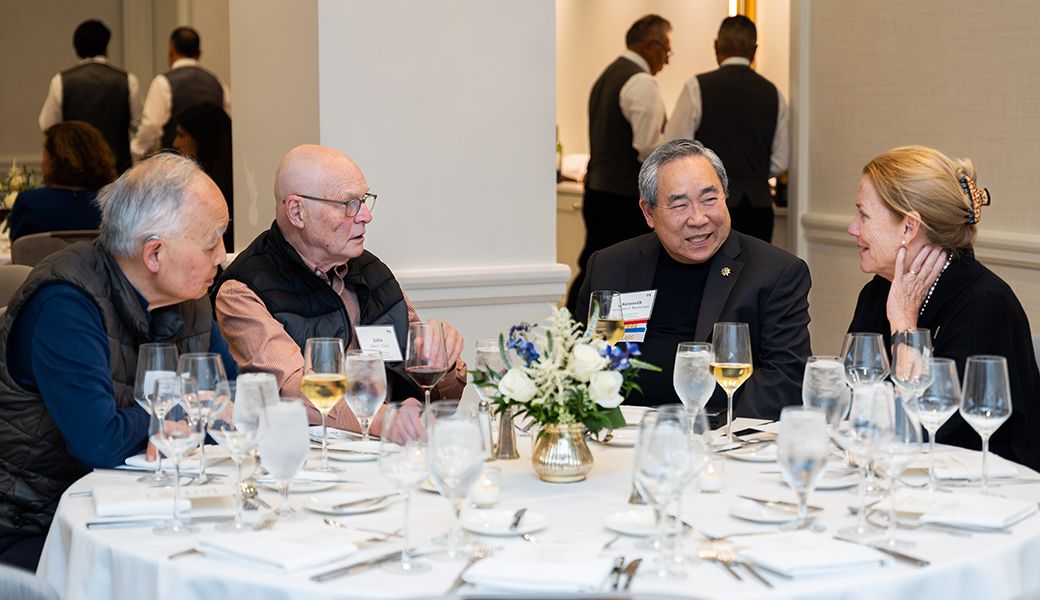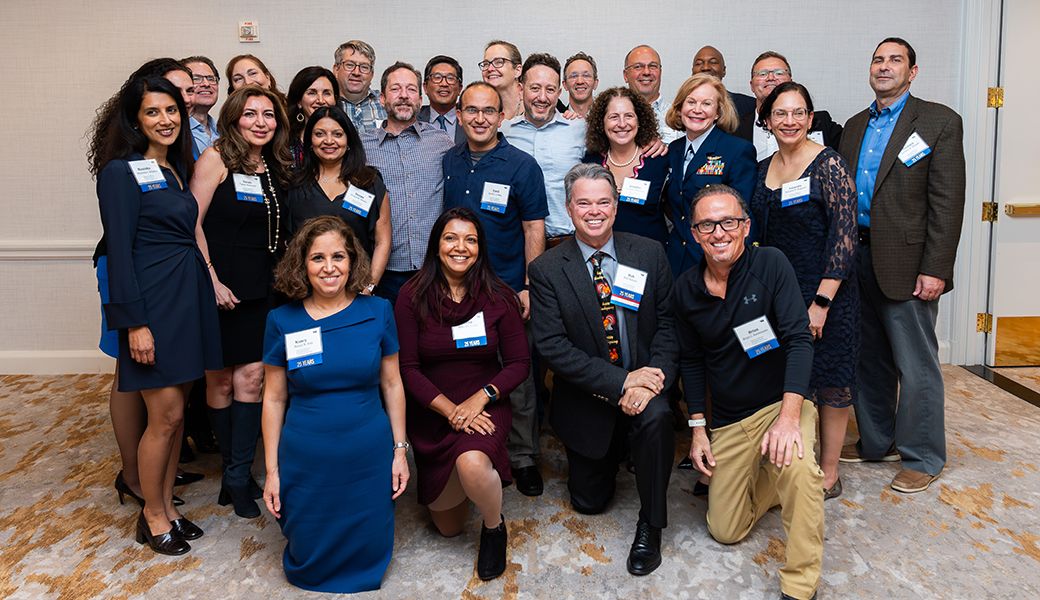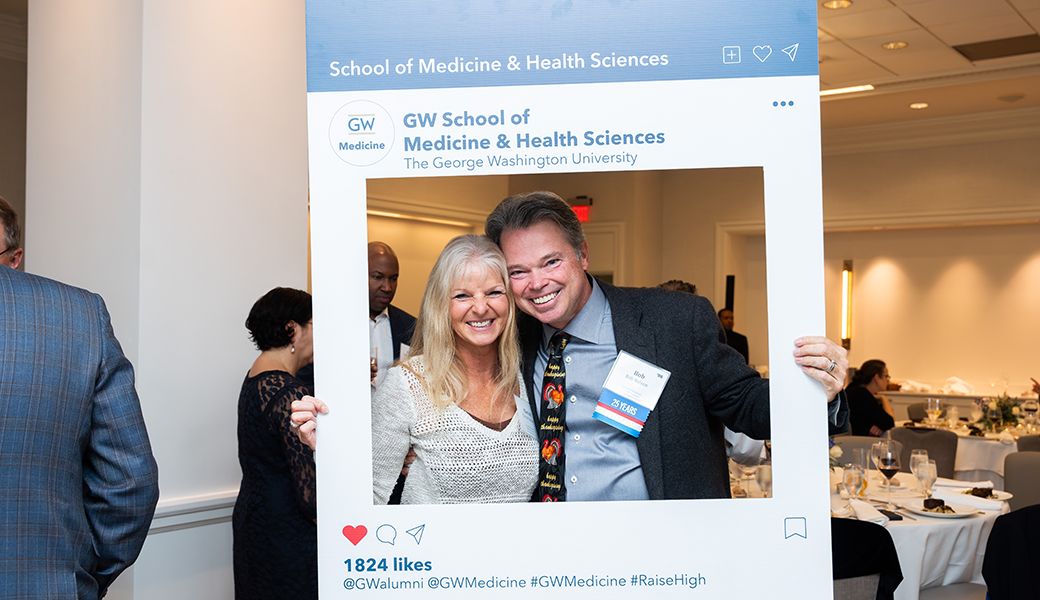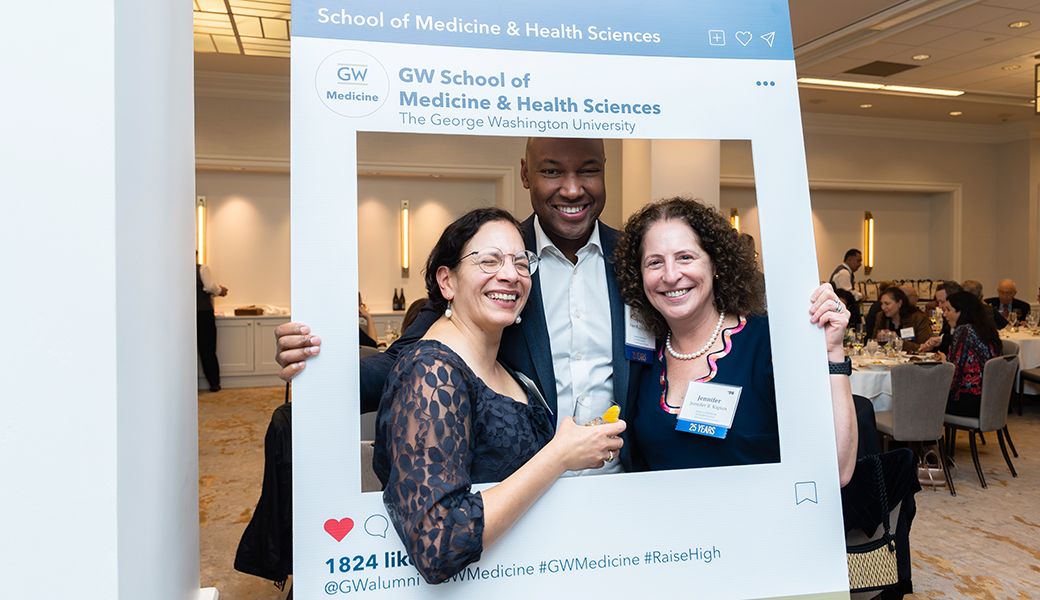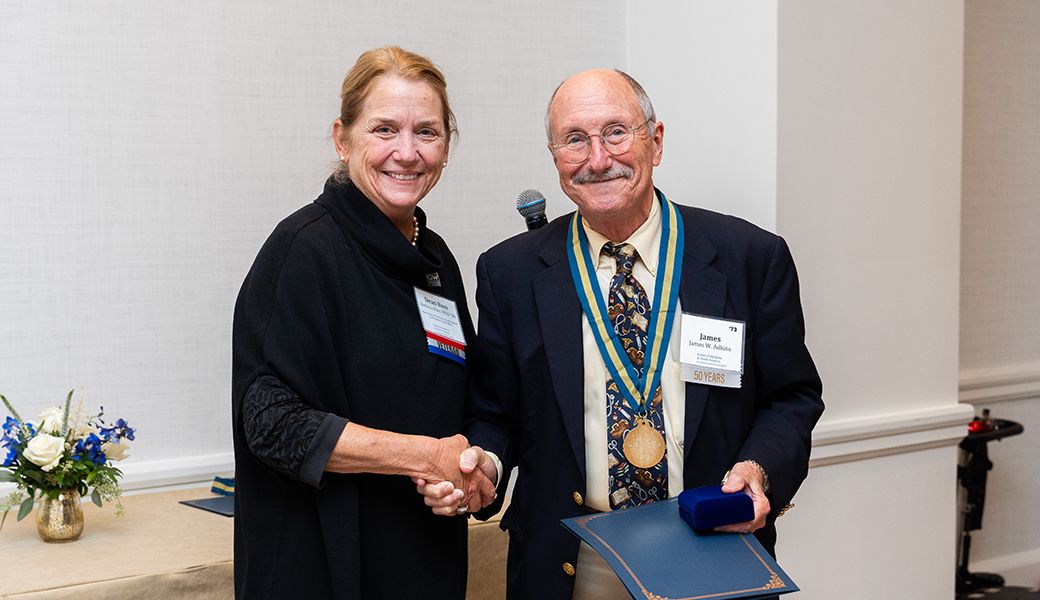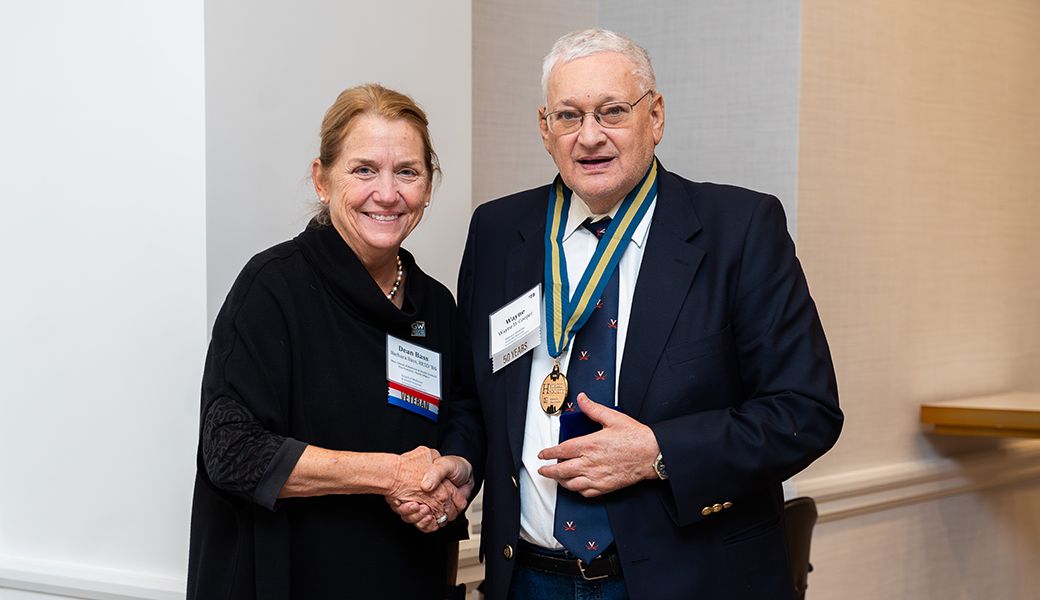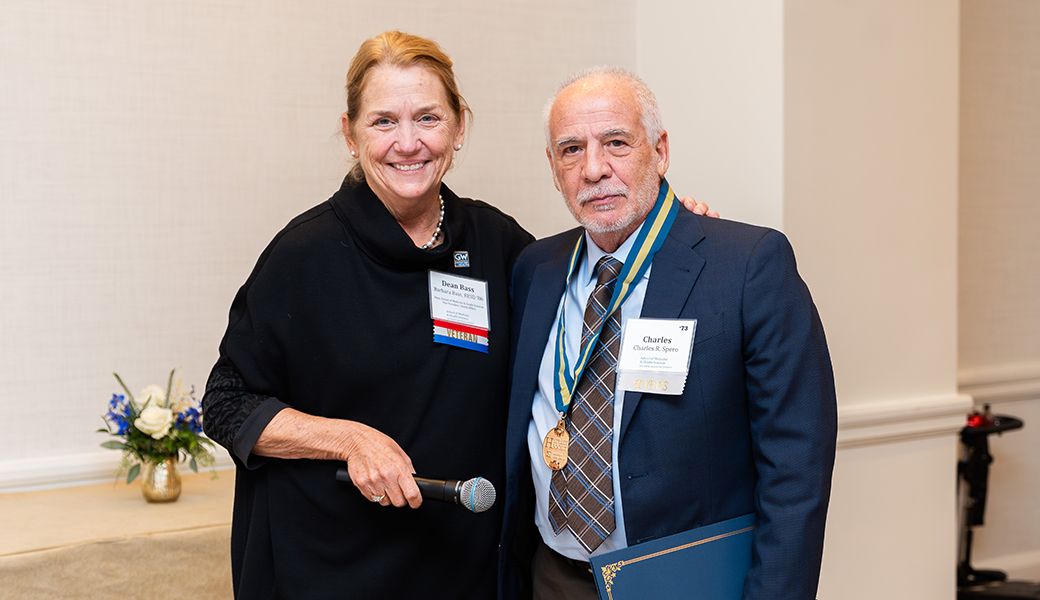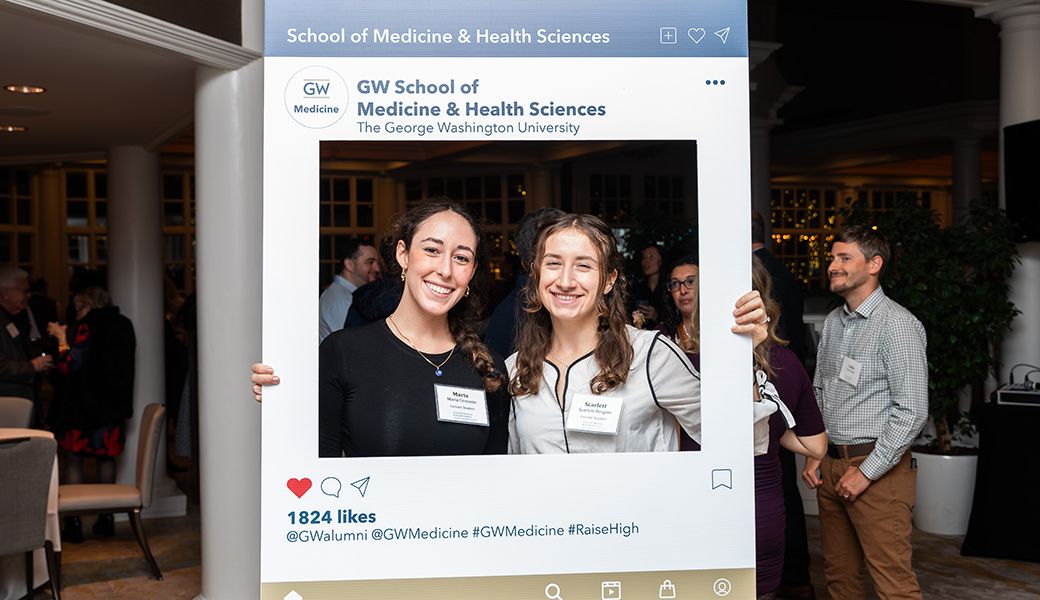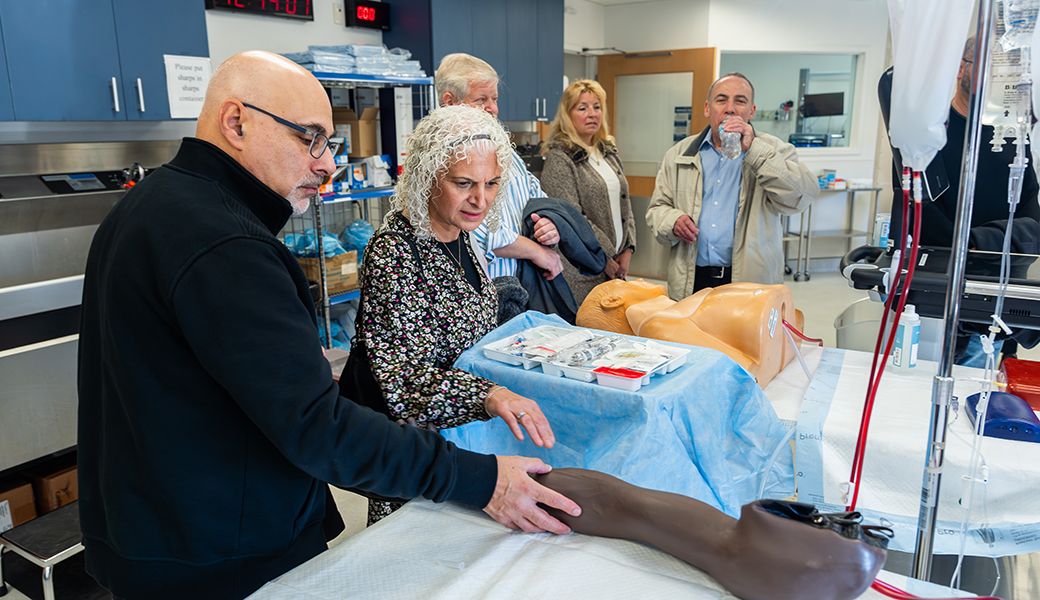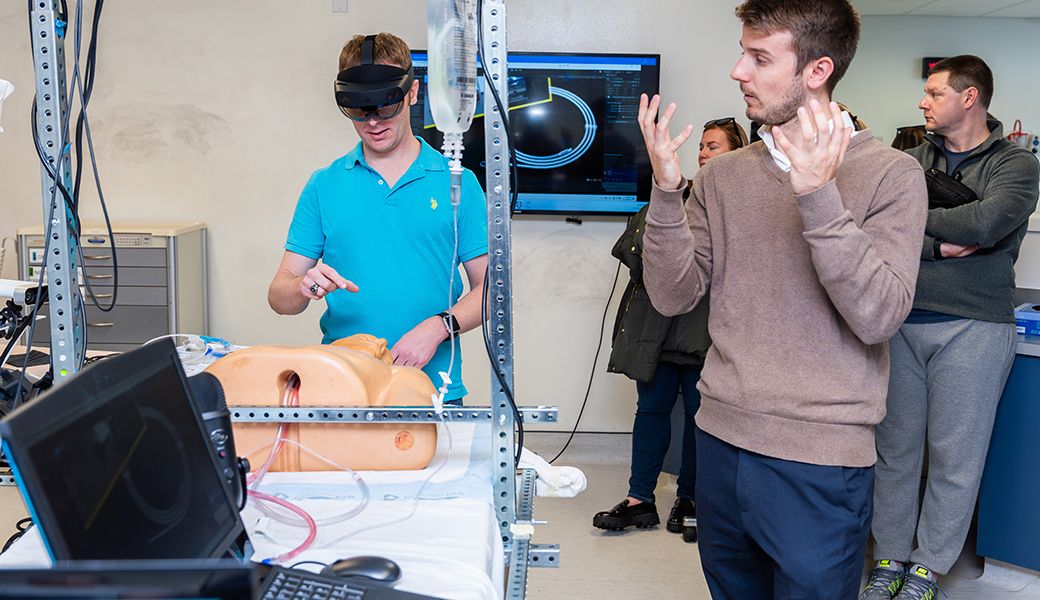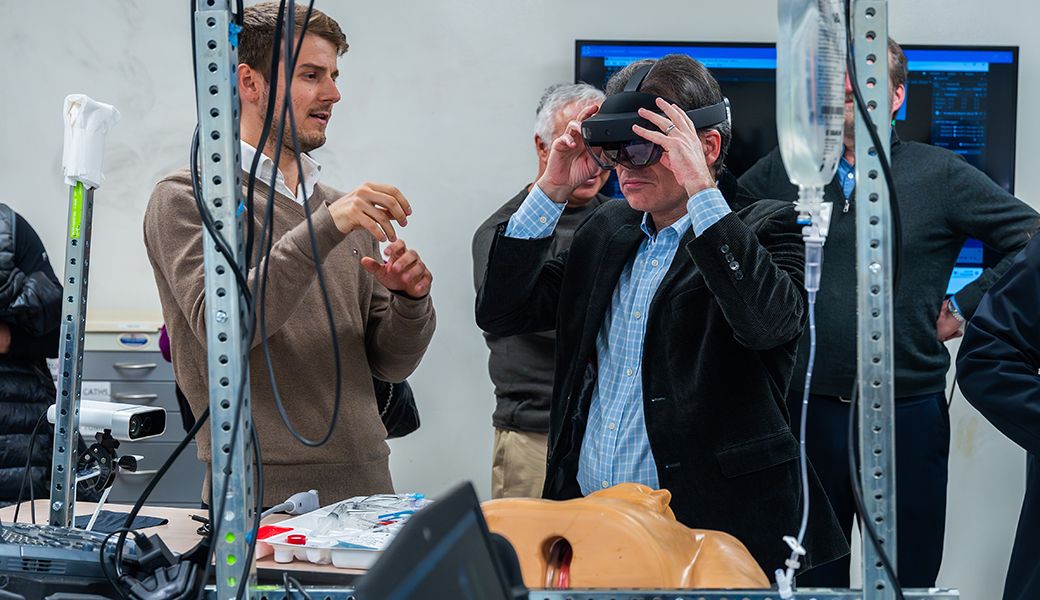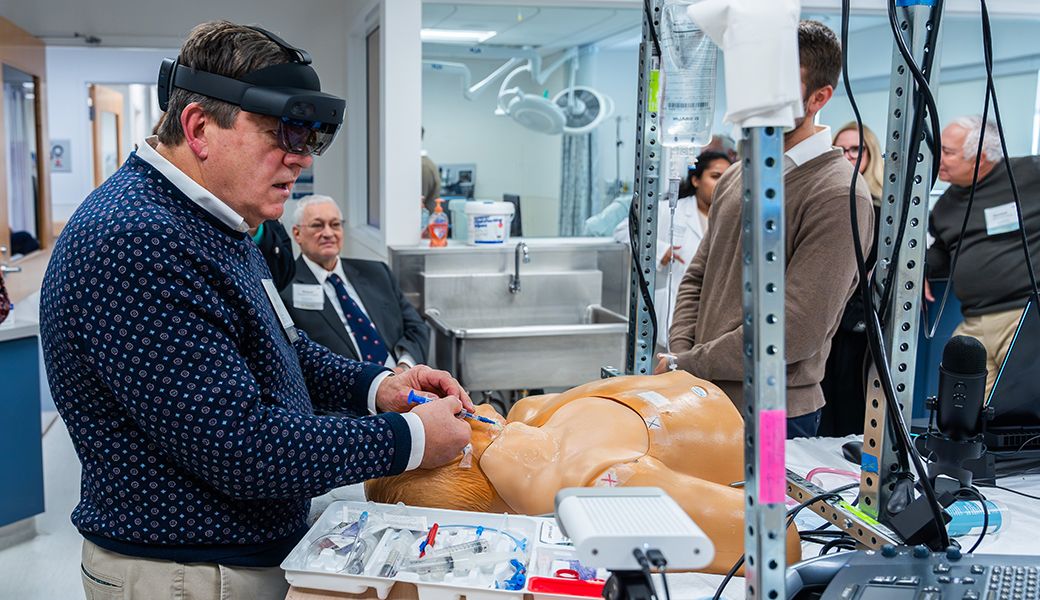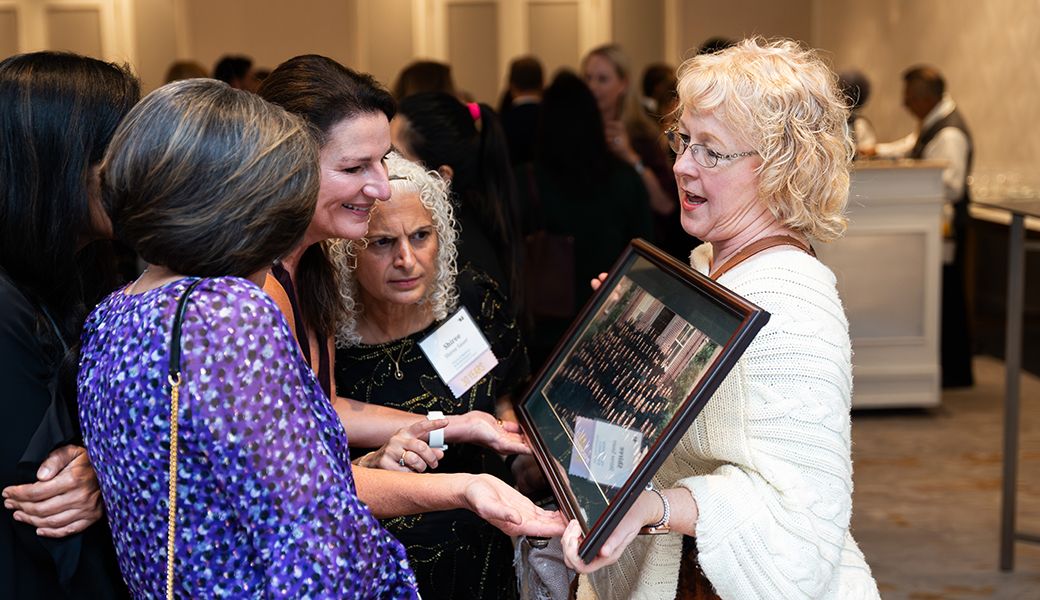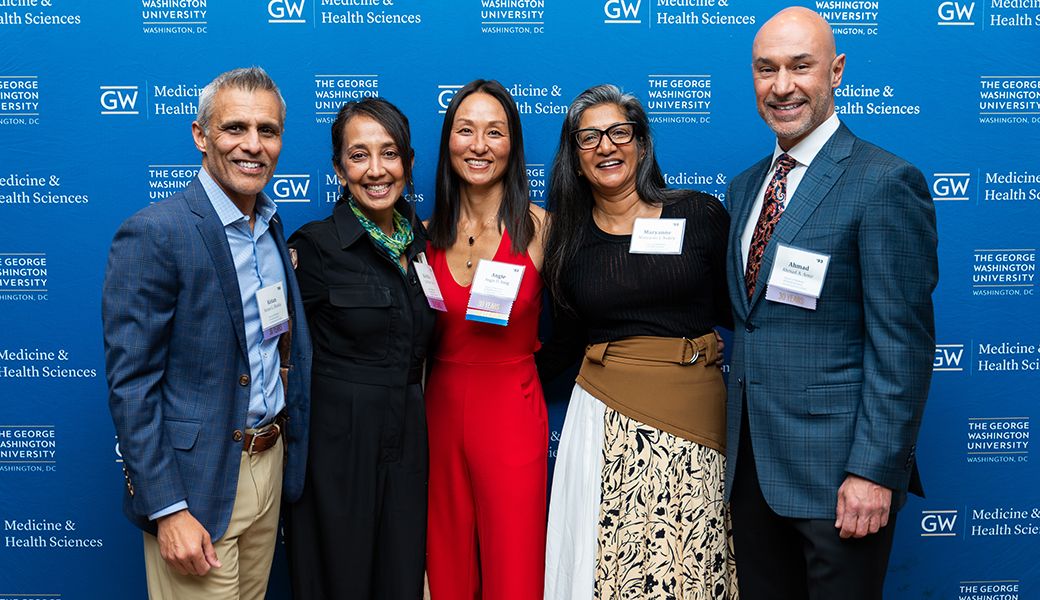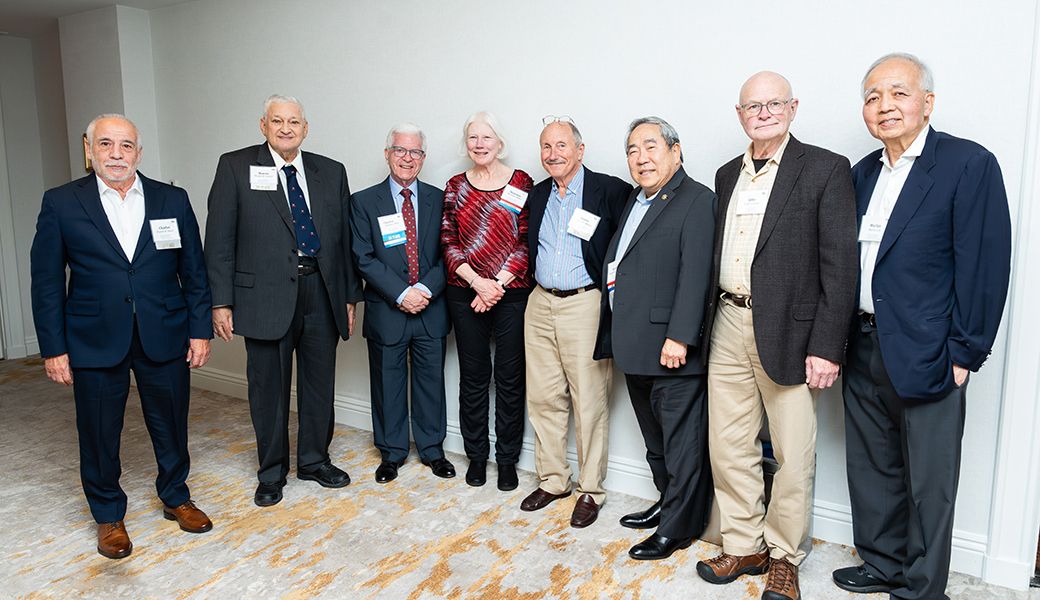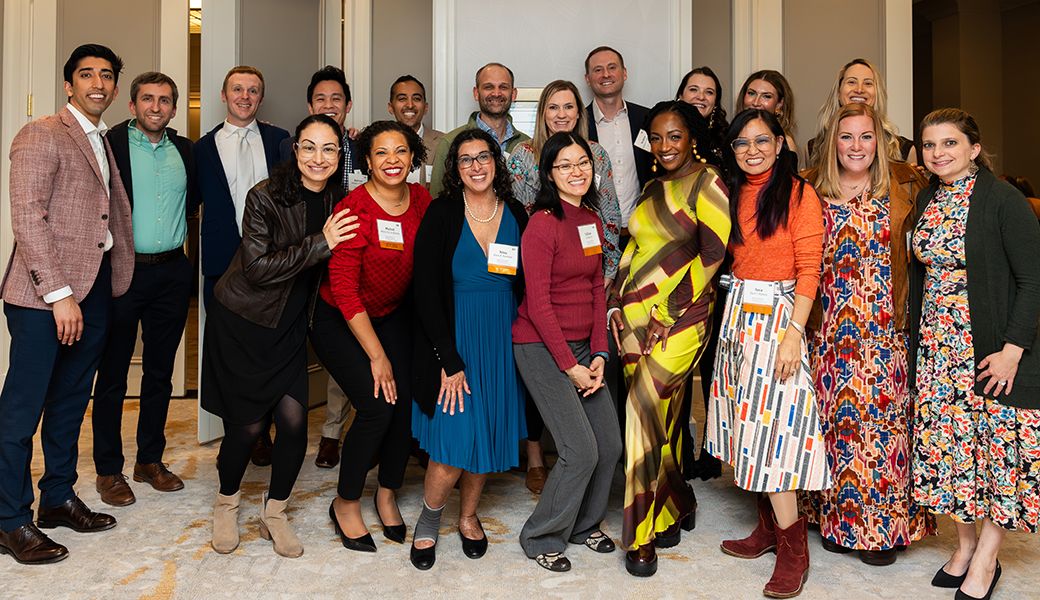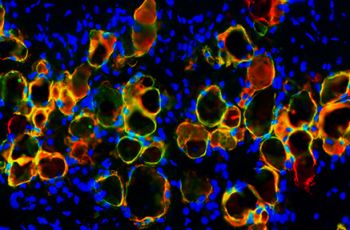More than 250 alumni representing George Washington University (GW) School of Medicine and Health Sciences (SMHS) MD program classes from 1968, 1973, 1978, 1983, 1988, 1993, 1998, 2003, 2008, 2013, and 2018, as well as H Street Society members who graduated from medical school before 1973, returned to Foggy Bottom for the annual Reunion Weekend celebration. The weekend marked the largest gathering of alumni and their families since the pandemic, and returning classes were eager to reconnect during multiple campus tours and social gatherings.
The four-day event kicked off Nov. 9, with a three-part Continuing Medical Education (CME) series featuring two endowed lectures, the annual Irene Tamagna Lecture in Hypertension and the 12th Annual Frank N. Miller, MD ’48, BS ’43, Endowed Lecture, as well as a discussion about the impact of new medical technology on health equity.
Presenting this year’s Tamagna lecture was Karel Pacak, MD, PhD, DSc, FACE, senior investigator, professor of medicine, and chief of the Section on Medical Neuroendocrinology and head of the Developmental Endocrinology, Metabolism, Genetics, and Endocrine Oncology Affinity Group of the Eunice Kennedy Shriver National Institute of Child Health and Human Development. A leading expert on neuroendocrine tumors, especially pheochromocytoma and paraganglioma, Pacak presented “New Biology of Pheochromocytoma in the Era of Precision Medicine: Implications for its Pathogenesis, Genetics, Diagnosis, and Treatment.”
The annual lecture is named for Irene Tamagna, who began her medical training in Austria in the 1930s, but was forced to leave her home and abandon her studies to flee the Nazi occupation and later fascists in Italy. Ultimately, Tamagna immigrated to the United States where she completed her studies at the Women’s Medical College of Pennsylvania and joined the George Washington University (GW) faculty in 1948, where she taught hypertension and clinical medicine to medical students for more than 40 years.
Rubin Roy, BS ’23, and Maranda Ward, EdD ’17, MPH, assistant professor of clinical research and leadership at SMHS, presented the second CME credit-bearing discussion titled, “Techequity: The Intersection of Medicine, Health Equity, and Technology.” The lecture addressed the rise of health technology and its impact on health equity.
In their address, Ward and Roy sought to explain potential the barriers to equitable health care posed by technology. A good start, said Roy, is to consider “who the technology is built for and what did the people who built it have in mind when creating these technologies?”
There are people involved in the development of health technologies, he explained, who don’t always consider that their technology might adversely effect various populations.
To illustrate his point, Roy noted issues surrounding pulse oximeters. At the height of the COVID-19 pandemic, pulse oximeters were a hot home health care commodity. However, in a May 2022 edition of JAMA Internal Medicine article, researchers noted that there was a “known design flaw of the pulse oximeter is that patients with darker skin (compared with lighter skin) are more likely to experience occult hypoxemia.”
In that instance, Roy said, “certain populations weren’t necessarily in mind when those devices were created. Even though everyone was assigned the same numerical rating [for a health oxygen level], they didn’t account for the fact that the device worked significantly better for certain skin complexions than others.”
Acknowledging the potential for bias and harm is essential to the strategic design, development, and deployment of advance health care technology. Understanding that artificial intelligence or machine learning technology can inhibit advancements in health equity, Roy and Ward concluded, is crucial to keeping these new technologies on the right path.
The day of learning wrapped up with the 12th Annual Frank N. Miller, MD ’48, BS ’43, Endowed Lecture, named in honor of the late professor emeritus of pathology, dean of students and curricular affairs, and chair of the Department of Pathology at SMHS from 1944 to 1985.
“Many of you, I’ll bet, knew Dr. Frank Miller, he was a legendary professor here at GW,” said Barbara L. Bass, MD, RESD ’86, professor of surgery, Bloedorn Chair of Administrative Medicine, vice president for health affairs, dean of GW SMHS and CEO of the GW Medical Faculty Associates, in her welcoming remarks. “He was a beloved teacher and professor throughout his career here, and he also held numerous leadership roles at the school and his legacy continues to have a formative impact on our educational programs.”
Presenting this year’s lecture, titled “The Future of Population Health Sciences and Health Equity in the GW Academic Medical Enterprise,” was LaQuandra Nesbitt, MD, MPH, senior associate dean for population health and health equity, Bicentennial Endowed Professor of Medicine and Health Sciences. In her remarks, Nesbitt, who also serves as executive director of the GW SMHS Center for Population Health Sciences and Health Equity, outlined GW's plan for preparing future clinicians, delivering high-quality and equitable care in a high-performing health system, and creating and disseminating community-led population health research within a world-class academic medical enterprise.
She began by defining what population health means for GW’s Center for Population Health Sciences and Health Equity; working to achieve the highest level of health for all people, regardless of their race, ethnicity, disability, sexual orientation, gender identity, socioeconomic status, geography, preferred language, or other factors.
“We’re really embarking on an innovative period in our academic medical enterprise,” she told the audience. “We’re thinking about how we integrate all of the things into our pillars of excellence, our clinical medicine, our academic programs, our research programs, and how we engage with population health and health equity.”
Day two of the weekend kicked off with a Veterans Day Ceremony presented by GW Military and Veteran Services, featuring Shannon Gregory, chief of flight operations for NASA, offering a tribute to the GW’s veterans as well as sharing insights into career. Alumni also had an opportunity to take guided tours of the Luther W. Brady Art Gallery, GW Museum, and The Textile Museum. Later, new GW President Ellen Granberg, PhD, joined Dean Bass for a cocktail reception to welcome the returning graduates.
Returning members of the SMHS MD Class of 1973 celebrated their 50th reunion and admission to the H Street Society during a luncheon and induction ceremony later that afternoon. Named after the site of the medical school prior to 1973, 1335 H St. NW, the society was created in 2012 to recognize alumni who graduated 50 or more years ago, honoring those distinguished alumni and strengthening their connection with the GW community.
In her annual State of the School address on Saturday, Dean Bass touched on several milestones occurring in 2023, notably including the installation of the university’s newest President, Ellen M. Granberg, PhD. The dean also offered an overview of the school’s values and mission pillars — Education, Research, Clinical Care, and Population Health and Health Equity — and the opening of GW’s first Regional Medical Campus (RMC) at Sinai Hospital of Baltimore, part of the LifeBridge Health system. The RMC will provide a cohort of third- and fourth-year medical students who have opted to spend their clinical years there, the opportunity to train in a community-focused health system with strong emphasis on primary and continuity care in a population health environment.
The dean also addressed the upcoming Liaison Committee on Medical Education reaccreditation process for the MD program and upcoming site visits, and she applauded the recent reaccreditations of both the Graduate Medical Education and Physician Assistant programs.
Throughout the day, current GW medical students led alumni tours of the medical school facilities and discussed what it’s like to be a GW medical student in 2023. The weekend culminated with an awards ceremony and class dinners.
